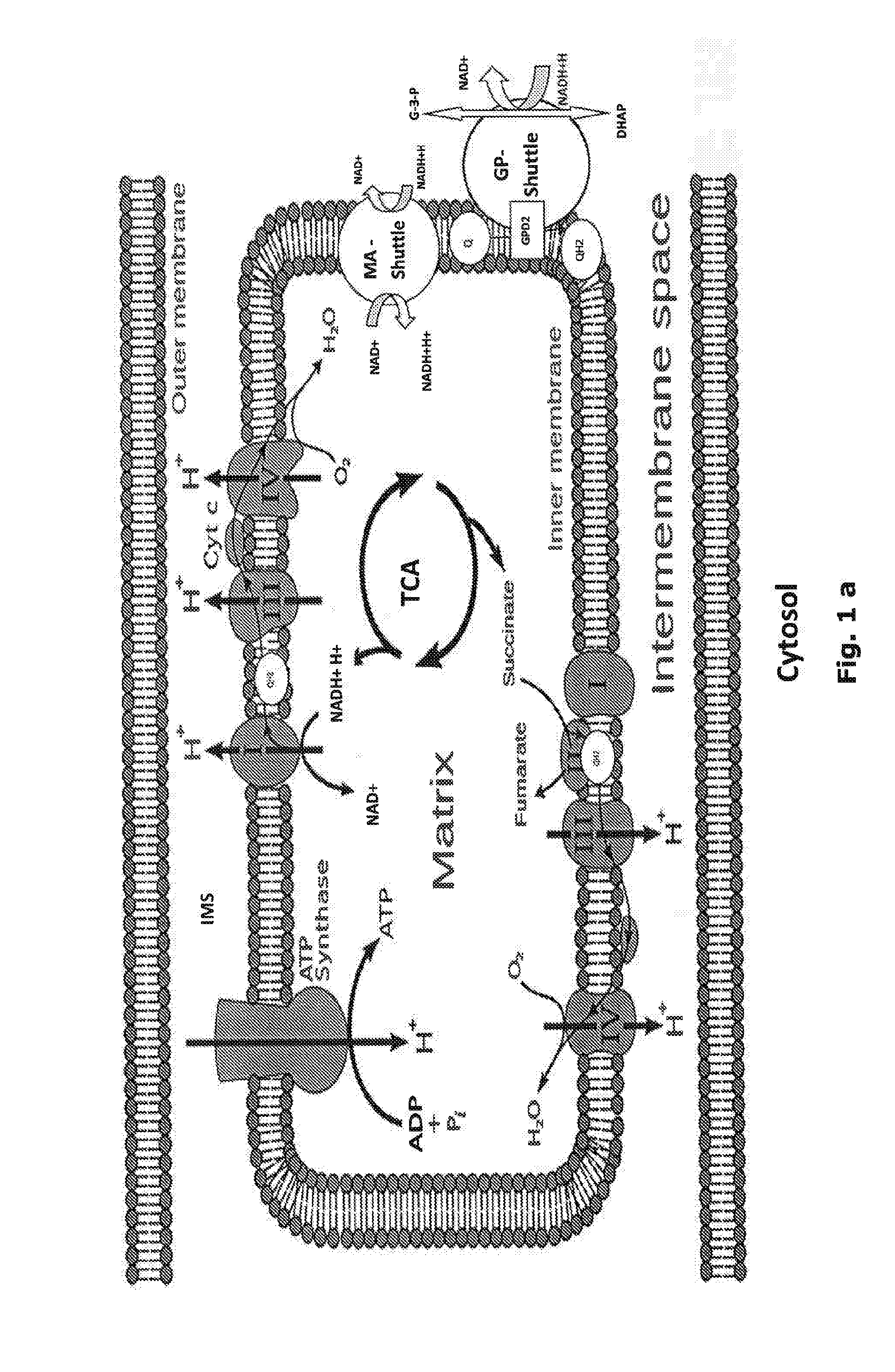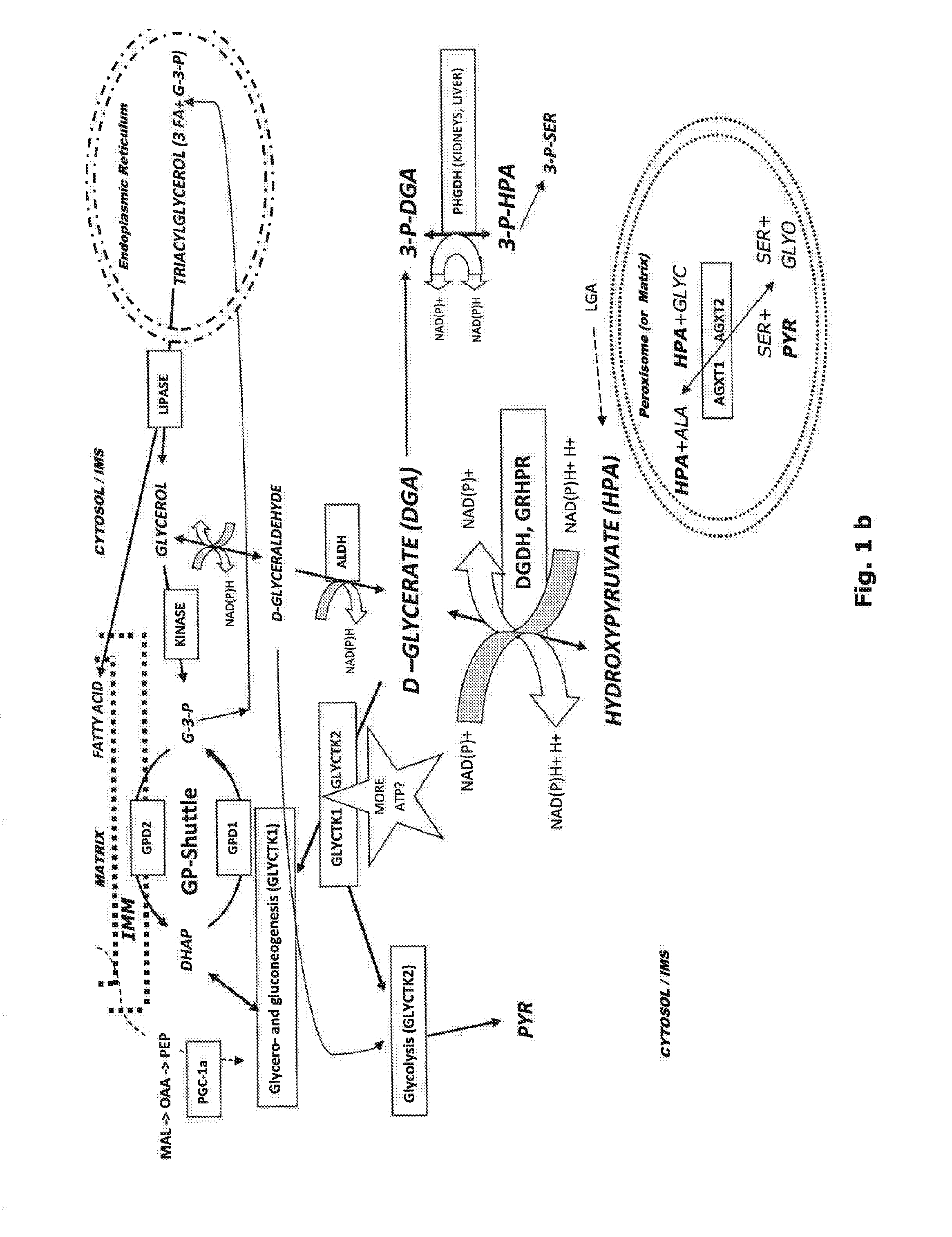Method for enhancing energy production and metabolism in cells
a technology of energy production and metabolism, applied in the field of cell energy production and metabolism enhancement, can solve the problems of serious pathological conditions, increased problem of non-communicable mitochondrial diseases, and disease, and achieve the effects of enhancing communication and cooperation of mitochondria, enhancing endogenous cellular antioxidant defense, and increasing the biogenesis of new mitochondria
- Summary
- Abstract
- Description
- Claims
- Application Information
AI Technical Summary
Benefits of technology
Problems solved by technology
Method used
Image
Examples
example 1
[0389]The purpose of first 4 separate in vitro studies with primary human hepatocytes (studies 1-4 in Example 1.1) was to investigate the effect of D-glyceric acid, calcium salt dehydrate (product number: 367494 / Sigma-Aldrich, later also DGAcs) to the cell viability and cellular reactive oxygen species (ROS). Also HPA and LGA were tested in some experiments.
[0390]Additional 2 studies (5-6 in Example 1.2) were conducted in order to verify and specify results from first 4 studies. On top of viability (LDH) and ROS analyses also gene expression and NAD+ / NADH-ratio was measured from human primary hepatocytes in studies 5-6 in Example 1.2.
[0391]Furthermore in studies 5-6 the accuracy of cell viability results based on LDH method was double checked with independent estimate on viability using the gene expression of the so called housekeeping genes from the cell cultures. The results of these independent viability tests were very well in line confirming that mostly used LDH estimation meth...
example 1.1
Measurement of LDH and ROS from Human Primary Hepatocytes
[0394]Materials and Methods
[0395]Primary human hepatocytes were purchased from Celsis In Vitro Technologies (1450 South Rolling Road Baltimore, Md. 21227, USA). Primary hepatocytes from altogether 4 donors aged 47 (YJM, female), 57 (DOO, male), 58 (CDP, male), and 54 (JGM, female) were used. According to the information provided by the Celsis, hepatocytes from each donor should have at least 70% viability and more than 5 million viable cells. The medium for the culture of hepatocytes was provided by Celsis. They were InVitroGRO CP (for plating) medium (Z99029) and InVitroGRO HI (for incubation) medium (Z99009). Antibiotics (Torpedo Antibiotics Mix, Z990007) were also from Celsis. The thaw, plating and culture of cells were carried out according to the instruction provided by the Celsis In Vitro Technologies.
[0396]The other reagents for experiments were D(−) fructose (Sigma-Aldrich, F0127), D(+)-glucose (Sigma-Aldrich G7528), D...
example 1.2
Measurement of NAD+ / NADH-Ratio, Viability and ROS from Human Primary Hepatocytes
[0423]In studies 5 and 6 same donors were used as in Example 1.1. Cell culturing was according to standard protocols (24 h cycle) and Hi Medium was used like in most experiments 1-4. The 3 donors chosen were DOO (male), JGM (female), and CDP (male). By using same donors we could double check methods used.
[0424]Viability and ROS confirmation: Without going into details for repeated viability and ROS results presented already in Example 1.1, we just conclude that DGAcs and also HPA reduced ROS compared to control, and that viability measurement using housekeeping gene expression confirmed LDH viability results.
PUM
| Property | Measurement | Unit |
|---|---|---|
| concentration | aaaaa | aaaaa |
| body weight | aaaaa | aaaaa |
| weight | aaaaa | aaaaa |
Abstract
Description
Claims
Application Information
 Login to View More
Login to View More - R&D
- Intellectual Property
- Life Sciences
- Materials
- Tech Scout
- Unparalleled Data Quality
- Higher Quality Content
- 60% Fewer Hallucinations
Browse by: Latest US Patents, China's latest patents, Technical Efficacy Thesaurus, Application Domain, Technology Topic, Popular Technical Reports.
© 2025 PatSnap. All rights reserved.Legal|Privacy policy|Modern Slavery Act Transparency Statement|Sitemap|About US| Contact US: help@patsnap.com



